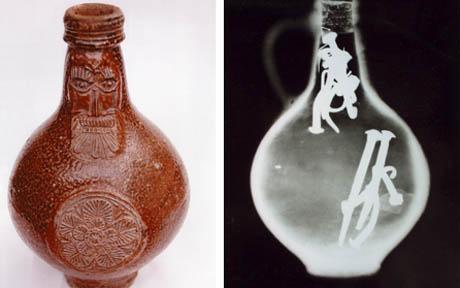
Sometime in the 1860s or shortly thereafter, an elderly Native American man sat or kneeled near the side of the road not far from present-day Escalante, Utah and died. The area is now part of the Grand Staircase-Escalante National Monument, a breathtaking natural wonder, but few people knew the old man lay there. Blowing sand had quickly covered up his remains and his possessions. His body was rediscovered by hikers in late 2007 and Bureau of Land Management anthropologists were called in to study the bones. The BLM nicknamed him Escalante Man. He carried a musket, percussion caps, polished stones, a horn, human molars from a young adult, and a large brass bucket fitted with a handle and chain bearing a patent date of December 15, 1866.
The old man, probably in his sixties, had rotting teeth and arthritic bones and may have just been overcome by weariness and disease when he died. The fact is, we don’t know. The FBI, you see, took control of the excavation, declaring it a crime scene and excluding archaeologists from its April 16, 2008 excavation. They also excluded state officials and the local Indian tribes. A BLM archaeologist, Matt Zweifel, complained about it and was ordered by higher ups in BLM to cease and desist.
“It’s an ongoing investigation. Our policy is we cannot comment on it,” FBI spokesman Juan Becerra said at the time, stating that they had good reasons to keep the archaeologist away from the dig. The U.S. Attorney’s Office also signed off on the investigation. Their refusal to talk to archaeologists or the public about this didn’t prevent them from inviting a KUTV news crew to come by and have a look. They filed an upbeat news story about it showing the FBI in a favorable light. That news story isn’t up at KUTV’s archive anymore, but you can read the whole text here.
To this date, as far as I can determine, the FBI has never stated why they turned this into a crime scene investigation and circumvented state and federal laws regarding the treatment of the remains of Native Americans. The story got much play in 2008 and was taken up by a number of forums, had some fantastical speculation, then died as stories often do. I haven’t found any references to it past 2008. For me, the most sensible answer as to why the Feds behaved as they did came from Ichneumon on the Darwin Central forum:
[I]t’s possible that something in the Escalante Man find matches details of some old but still remembered crime, or that there are signs he was murdered in a still significant way, or had on him bills or objects from a high-profile old crime, or was a prominent historical figure, etc. Maybe there are signs he died of an infectious disease that could still be virulent and the CDC is involved. There are lots of somewhat possible reasons for the feds to want to be involved.
On the other hand, maybe they just barged in before it was realized how old the body was, and now they’re too embarassed to step back and say, “oops, never mind”.
Yep, could be. But I’ll leave you with one more piece of intrigue. Some years ago when I originally poked around about this story, I went to the BLM website’s “Environment Notification Bulletin Board.” I found this entry and for some reason I decided to take a screen capture:

If you can’t see the entire entry, click on the picture and it will take you to Photobucket and show the whole thing.
The dates shown on the right hand side of this fall under the labels of Last Updated and Created. I think it’s interesting that the protesting BLM guy was quietly reburying bones at the end of the year when this controversy blew up. But what I find more intriguing is a recent re-visit to this BLM site. The entry shown above is no longer listed on the bulletin board, completely gone from the records as far as I can determine.
Maybe they pulled the entry because it was old—although I’ve found things on the bb going back to 2006. Maybe I typed it in wrong—all of the several times I searched for it. Maybe it’s all a coincidence and the above entry has nothing to do with Escalante Man. Maybe. Maybe even probably. Maybe.



